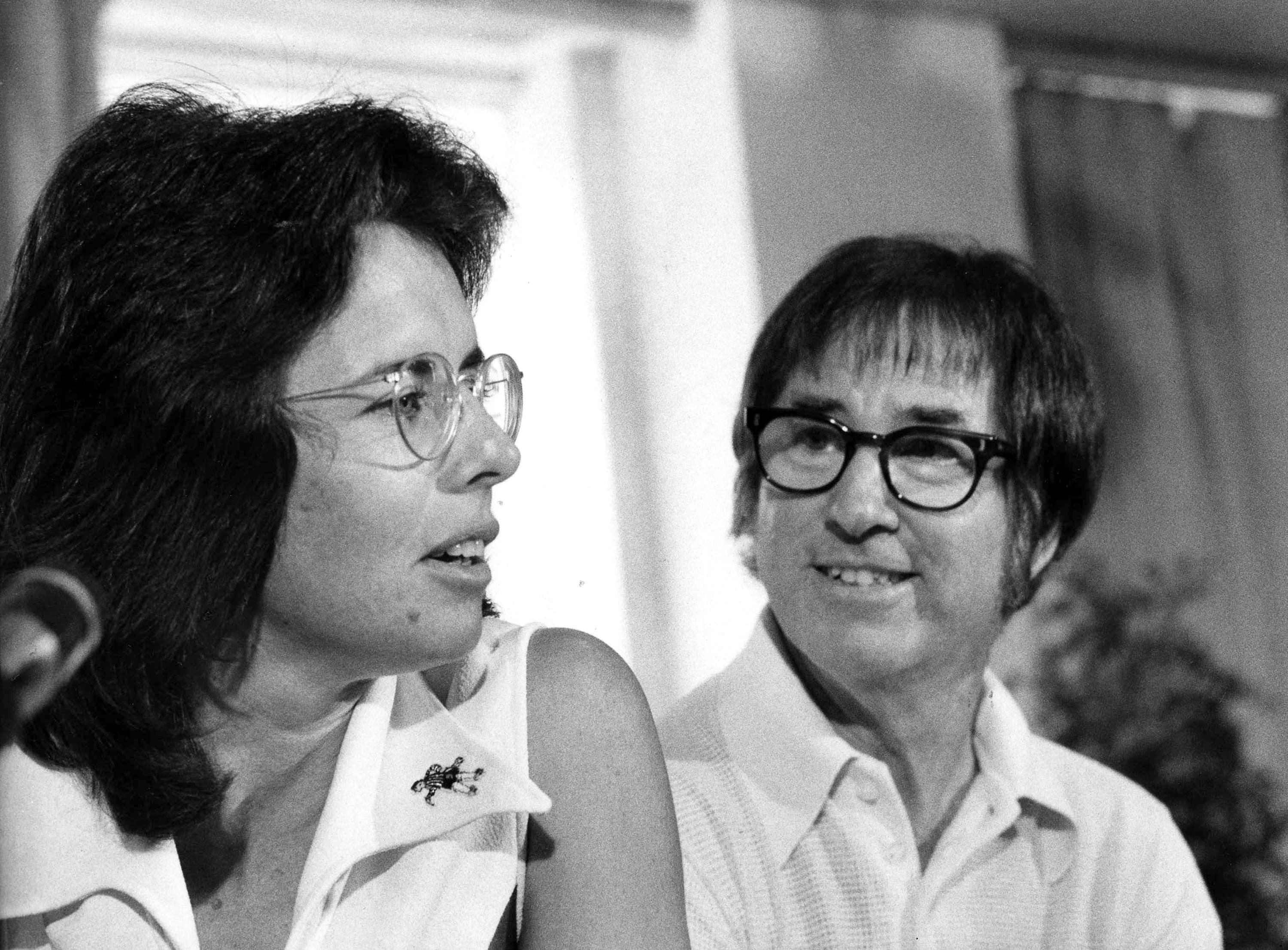Walter Diemer made it more fun to be a kid.
Business owners and ballplayers smiled with profit and pleasure, too, after chewing on his contribution to global consumer culture.
Diemer invented bubble gum in Philadelphia, Pennsylvania in 1928.
It was an unexpected moment of inspiration for the high-school graduate gum-company accountant with a side hustle as a home-kitchen chemist.
Diemer mixed creativity, curiosity and instinct with a little bit of luck and pink food coloring to change the reason humans chew.
The young man, just 23 at the time, had no scientific training. But he had passion for the creative process and a willingness to fail.
In 1948 in Palisades Park, New Jersey, Peter Kadielewski, 10 years old — an entrant in the New York Boy’s Club Bubble Gum Contest — was trying to stretch a king-sized bubble into something larger when the thing blew up in his face. (Getty Images)
“He’s the perfect example of 100% American ingenuity,” Lee Wardlaw, the California-based author of “Bubblemania: The Chewy History of Bubblegum,” told Fox News Digital.
“Humans tried for a long time to create bubble gum. Diemer did it in his own kitchen. He wasn’t even a chemist. He just tried and tried,” said Wardlaw.
“Thomas Edison knew 99 ways not to make lightbulbs. Diemer knew 99 ways not to make bubble gum.”
One of the oldest candies in the world
Walter Edwin Diemer was born on Jan. 8, 1905 in Philadelphia, to Edwin and Mary Elizabeth (Rhode) Diemer.
Little is known about his early life. But he grew up in an era of rapid innovation in the way Americans live.
A box of 1928 Original Dubble Bubble gum. The first marketable bubble gum, Dubble Bubble was invented by Walter Diemer, a 23-year-old accountant with chewing-gum maker Fleer Co. of Philadelphia. (Felix Choo/Alamy Stock Photo)
Automobiles and airplanes revolutionized travel and made the nation smaller.
Home life grew easier, too. Electricity to indoor plumbing — things we take for granted today — emerged in the United States as normal parts of daily domesticity for the first time in humanity’s long struggle to survive.
One part of human life, however, changed little for millennia.
“No one can be absolutely certain who the first gum chewers were, but historians tell us that civilizations around the world were chewing natural gum thousands of years ago,” the International Chewing Gum Association (ICGA) reports.
“Before the invention of the electric light bulb, the telephone or even soda pop, people discovered the pleasure and benefits of chewing gum.”
Chewing gum is “one of the oldest candies in the world,” the ICGA also says.
Jake Rogers of the Detroit Tigers looks on from the dugout and blows a giant bubble-gum bubble during the game against the Baltimore Orioles in a 2019 Major League Baseball game. (Mark Cunningham/MLB Photos via Getty Images)
It’s also a uniquely human habit.
Thegums, resins and latex plant secretions that humans chew for pleasure are widespread in nature. Yet no other animals picked up the habit.
The simple pleasure captivates the human psyche and is deeply embedded in our DNA and dreams.
One of the most famous kids in American literature, given the genie’s gift of any wish in the world, pined for more gum than one boy could ever chew.
MEET THE AMERICAN WHO SERVED AS THE MODEL FOR HUCK FINN, ‘KIINDLY YOUNG HEATHEN’ TOM BLANKENSHIP
“If he tells them to build a palace 40 miles long out of di’monds and fill it full of chewing gum,” the title character of Mark Twain’s 1884 novel “Huckleberry Finn” enthused, “they’ve got to do it.”
The 1920s were an era of prohibited pleasure, however. Alcohol was outlawed with the Volstead Act of 1919.
Chewing-gum companies and confectioners saw bubble gum as a way to satiate the human desire to chew — and, in the 1920s, to profit from America’s thirst for new pleasures of the palate.
Why bubble gum is pink
All chewing gum is made with four basic ingredients: a base resin, now often synthetic; flavorings, such as spearmint; sweeteners, natural or synthetic sugars; and coloring.
Bazooka Joe bubble gum, with its famous comic-strip wrapper, was used for decades by Topps Co. to market its baseball trading cards. (Jay Paul/Bloomberg via Getty Images)
Bubble gum, in most instances, is pink.
Regardless of color, bubble gum requires a specific formula to make itstretchy and strong enough to produce bubbles, but not too sticky — yet still easy to chew.
The best chemists and food scientists tried and failed for decades to find the perfect formula.
Frank Henry Fleer himself, the owner of the company that employed Diemer, made some of his own advances. He introduced Blibber-Blubber in 1906.
The would-be bubble gum was just as bad as its name.
A man examines jelly on a spoon in the research department of a gum company in 1935. (Borthwick Institute/Heritage Images/Getty Images)
“The stuff was too brittle. Bubbles would explode without warning,” writes Wardlaw in “Bubblemania.”
“Also, they [the bubbles] had the messy habit of sticking to the blower’s face. The only way to remove it from someone’s skin was scrubbing it with turpentine.”
A chewy resin that produced bubbles proved the elusive Holy Grail of gum.
Diemer remained undaunted. He spent a year testing recipes at home, apparently with the approval — and bemused low expectations — of his bosses.
Coworkers were stunned when the young accountant walked into the office in August 1928 carrying a 5-pound batch of his latest home-cooked gum. He blew a bubble larger than anyone had seen.
“It finally popped softly,” Wardlaw writes, “and he easily peeled it off his skin.”
The inventor of bubble gum for Fleer Co., Walter Diemer (not pictured), dyed the first batch pink in 1928 because it was the only food coloring he had available. Bubble gum remains largely pink today. (Sebastian Kahnert/picture alliance via Getty Images)
“I had it! Everybody tried some,” Diemer later recalled. “It really went to our heads. We were blowing bubbles and prancing all over the place!”
The company dubbed it Dubble Bubble. Diemer mastered a 300-pound batch by the end of the year.
The first 100 pieces were wrapped in taffy paper and brought to a local candy shop on Dec. 26, 1928.
Fleer, coincidentally, had entered the baseball trading card business in 1923. Baseball card manufacturers soon found that sticking a piece of bubble gum in the package was the perfect way to get kids to buy their products.
Among the many reasons kids loved bubble gum was its unique pink color. It was a stroke of marketing genius by Fleer Co. and Diemer.
Not quite.
Bubble gum has been used since soon after its invention in 1928 to market trading cards to children. These trading cards featuring the 1970s Swedish pop group Abba were sold at auction in 2013. (SCANPIX SWEDEN/AFP via Getty Images)
“Pink food coloring was the only kind on hand” that day in Dec. 1928, writes Wardlaw. “He grabbed a bottle and dumped the bright liquid into the monstrous vat.”
With few exceptions, the color of bubble gum has never changed.
‘I’ve done something with my life’
Walter Diemer died on Jan. 8, 1998, his 93rd birthday, in Lancaster, Pennsylvania.
His zest for life never faltered.
A group of five children chewing gum and blowing bubbles in the Seattle, Washington area in 1979. (H. Armstrong Roberts/ClassicStock/Getty Images)
After his wife died in 1991, he moved to Lancaster, where “he was known as a free spirit who rode around town on a big tricycle,” the New York Times News Service wrote in a published obituary.
He remarried in 1996 — at 91 years old.
MEET THE AMERICAN WHO INVENTED SLICED BREAD: OTTO ROHWEDDER, HARD-LUCK HAWKEYE
Diemer’s impact on American life merited a “too soon” moment of comedy a few days after his death on “Saturday Night Live,” then a bellwether of cultural relevance.
“The inventor of bubble gum died this week,” Colin Quinn said on his “Weekend Update” segment. “His body was found stuck under a movie seat.”
Diemer’s Dubble Bubble remains the standard by which bubble-gum bubbles are measured.
It’s just “fun to blow bubbles,” said one author. At right, Ty France of the Seattle Mariners gives Julio Rodriguez a Dubble Bubble shower after his game-winning walk-off single against the Boston Red Sox on March 30, 2024, in Seattle, Washington. (iStock; Alika Jenner/Getty Images)
Chad Fell of Alabama inflated a majestic 20-inch bubble-gum bubble on April 24, 2004 — still the largest ever known.
“He used the combined strength of three pieces of Dubble Bubble gum to create the pink balloon,” reports Guinness World Records.
Diemer’s invention inspired an entire new category of music. “Bubble gum pop” equates his candy to flirtatious fun set to an upbeat, breezy tune.
CLICK HERE TO SIGN UP FOR OUR LIFESTYLE NEWSLETTER
“Boys you’re right I’m having fun/chewing on my bubble gum,” Ella Fitzgerald sang in her 1939 recording “Chew, Chew, Chew (Your Bubble Gum),” an early example of the genre.
Bubblegum-pop classic “Sugar, Sugar” by the Archies was the No. 1-selling song in America in 1969, a sweet bit of ear candy almost everyone enjoyed amid the turmoil of the Vietnam War and social unrest.
Bubble gum helps sell books to kids today.
Dozens of bubble gum-themed books are listed at online retailers.
“There’s something about bubble gum that just instantly appeals to kids,” said Wardlaw. “They love the color. It’s fun to blow bubbles and it annoys your parents.”
Bob Crane of the CBS TV sitcom “Hogan’s Heroes” (portrays Col. Robert E. Hogan), with packages of Fleer brand “Hogan’s Heroes” card sets and bubble gum, May 6, 1966. (CBS via Getty Images)
Diemer apparently never received royalties for his invention.
But he never left Fleer — he became a senior executive there. He helped popularize bubble gum in its early days, teaching salesmen how to blow bubbles.
It’s a skill that millions of children around the world gleefully master today at an early age.
“He was terrifically proud of it,” his wife Florence Diemer said, as reported in several tributes.
“He would say to me, ‘I’ve done something with my life. I’ve made kids happy around the world.'”
To read more stories in this unique “Meet the American Who…” series from Fox News Digital, click here.
For more Lifestyle articles, visit www.foxnews.com/lifestyle.
Kerry J. Byrne is a lifestyle reporter with Fox News Digital.




